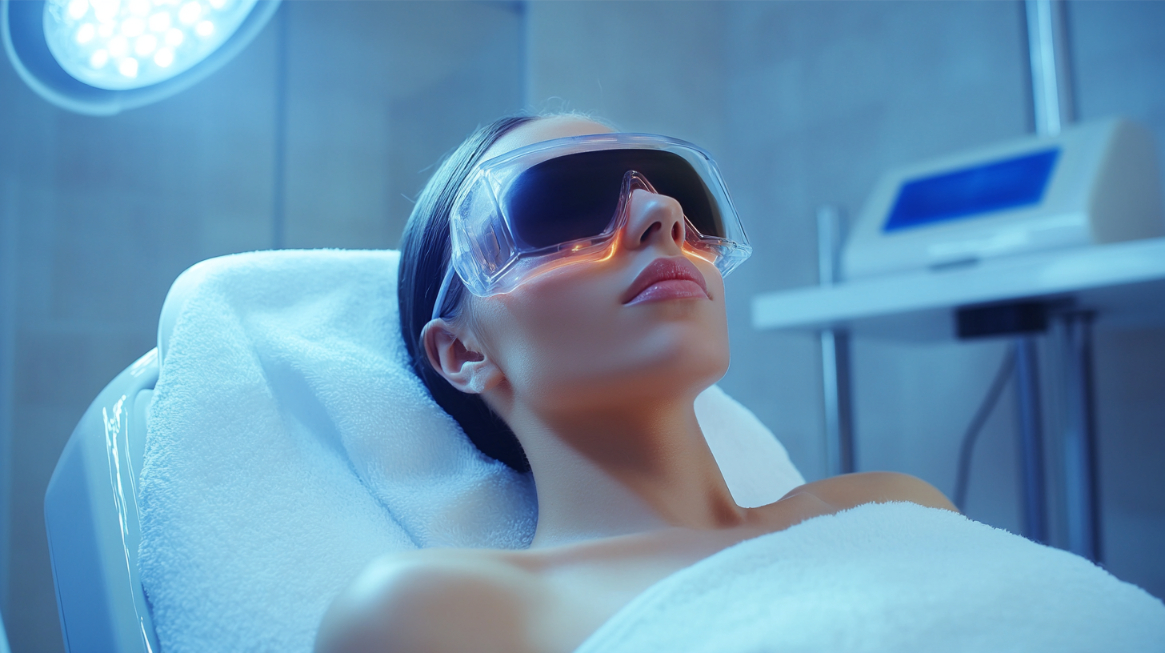Have you ever thought about whether you should shave before undergoing a laser hair removal treatment? This question often arises as individuals prepare for their sessions, and it’s crucial to understand the steps leading to the best outcomes. Laser hair removal has gathered immense popularity as a preferred method for achieving smooth, hairless skin. However, like any cosmetic procedure, it requires certain preparations to ensure effectiveness and mitigate any adverse reactions.
Understanding Laser Hair Removal
In the world of aesthetics, laser hair removal stands out for its ability to offer long-lasting smoothness. It works by targeting the melanin in hair follicles with laser light, effectively destroying them and reducing hair growth. This non-invasive procedure is celebrated for its precision and is generally used on legs, arms, underarms, face, bikini area, and other parts without causing damage to surrounding skin.
To maximize the benefits of laser hair removal, you need to engage in specific preparatory steps, primarily focusing on your shaving routine.
Get Your Free Consultation Today
The Pre-Laser Hair Removal Routine: Why Shaving Is Essential
The Importance of a Smooth Surface
One of the core preparatory steps before a laser hair session is shaving the treatment area. You may wonder why this is necessary and how it fits into the process. Shaving ensures that the laser targets the follicle rather than burning surface hair, which reduces the risk of skin irritation. Without shaving, surface hair may absorb the laser energy, which decreases the efficiency of the treatment and increases the likelihood of burnt hair odor. Furthermore, it helps prevent surface burns and facilitates the laser in penetrating the hair follicle directly.
Timing: When Should You Shave?
Timing is crucial when it comes to preparing for your laser treatment. Ideally, you should shave the desired area 24 hours before your appointment. This period allows any micro-cuts caused by shaving to heal, reducing the possibility of irritation during the session. Additionally, it provides a clean and stable surface for the laser to work effectively without interruptions.
Correct Shaving Techniques
Executing the shaving process accurately is essential to avoid irritation and ensure potent treatment. Employ a high-quality razor and shave cream to achieve a smooth result without nicks or irritation. It’s advisable to shave in the direction of hair growth to minimize the risk of ingrown hairs. Make sure to rinse the skin thoroughly afterwards to clear away any residues that might cause skin reactions.
What Happens if You Skip Shaving?
Bypassing the shaving step before your laser treatment can have several drawbacks. First, as previously mentioned, the surface hair can absorb the laser energy, resulting in an insufficient application to the targeted follicles. This may lead to discomfort during the procedure, with possible burning of surface hair and increased risk of skin irritation or burns. Ultimately, forgoing shaving can compromise the overall effectiveness of the treatment and could result in the need for additional sessions.
Preparing Your Skin: Additional Considerations
Avoid Tanning
In addition to shaving, consider avoiding tanning or use of sunless tanning products for at least two weeks prior to treatment. Tanned skin can increase the likelihood of adverse reactions such as blistering or pigmentation changes due to increased melanin present in the skin, which can also absorb the laser energy undesirably.
Refrain From Other Hair Removal Methods
While shaving is recommended, you should avoid any other hair removal techniques, such as waxing, tweezing, or depilatory creams, for at least four to six weeks before treatment. These methods remove the hair root, which is necessary for the laser to effectively target the follicle.
Cleansing and Exfoliating
A gentle cleanse and exfoliation of the skin can help remove any dead skin cells and ensure that there is no barrier to the laser. However, exfoliate carefully to avoid any irritation or skin damage before the treatment.
Post-Treatment: Maintaining the Results
Once your laser hair removal session is complete, post-treatment care is critical for achieving optimal results and ensuring your skin heals properly.
Soothe and Protect
After a laser hair session, your skin may appear slightly red and might feel like you have a mild sunburn. Applying a soothing aloe gel or mild moisturizer can alleviate discomfort. Your skin will be more sensitive to sun exposure, so it is imperative to apply broad-spectrum sunscreen on treated areas to prevent any potential damage from UV rays.
Avoid Heat and Friction
Try to avoid hot showers, saunas, and activities that may cause excessive sweating in the first 48 hours post-treatment, as your skin will be particularly sensitive. Wearing loose-fitting clothing can also help prevent irritation caused by friction.
Understanding the Long-term Process
It is crucial to realize that laser hair removal is not a one-time treatment. Hair grows in cycles, and multiple sessions are necessary to address all follicles effectively. The average number of sessions ranges from six to eight, spaced about four to eight weeks apart, depending on the area being treated and your individual hair growth cycle.
Evaluating the Results
After a complete series of treatments, you can expect a significant reduction in hair growth, with many experiencing up to 90% reduction. However, yearly touch-up sessions may be required to maintain results, as hormonal changes or other factors could prompt some hair regrowth.
Managing Expectations
While laser hair removal is highly effective, results can vary based on skin type, hair color, and hair thickness. It tends to work best on individuals with light skin and dark hair due to the contrast in pigmentation. Those with lighter hair colors may not experience the same level of efficacy as the laser light targets the melanin in hair.
Consultation and Professional Guidance
If you’re unsure about any aspect of the preparation or the process, consulting with a certified practitioner is invaluable. Professionals can offer personalized advice based on your skin type, hair texture, and specific areas of treatment. They will also inform you about potential side effects and address any questions, ensuring you are fully informed and comfortable with the procedure.
Choosing a Trustworthy Provider
Selecting the right clinic or provider is pivotal to achieving the best outcomes in laser hair removal. A reputable establishment like Spoiled Laser, as mentioned earlier, can assure the highest standards of care and efficacy. Verify the credentials of practitioners and check reviews or testimonials from prior clients to assess the reliability and quality of services offered.
Final Thoughts
Shaving before laser hair removal is critical for ensuring the procedure is effective and safe. Proper preparation not only enhances the efficacy of the laser by allowing direct contact with the follicle but also reduces the risk of adverse skin reactions.
By following pre-treatment guidelines—shaving, avoiding sun exposure, and refraining from other hair removal techniques—along with adhering to post-treatment care, you set yourself on the path for a successful laser hair removal journey. With repeated sessions and careful management, you can achieve significant, lasting reduction in hair growth, enhancing your confidence and leaving you with the smooth skin you’ve desired.


